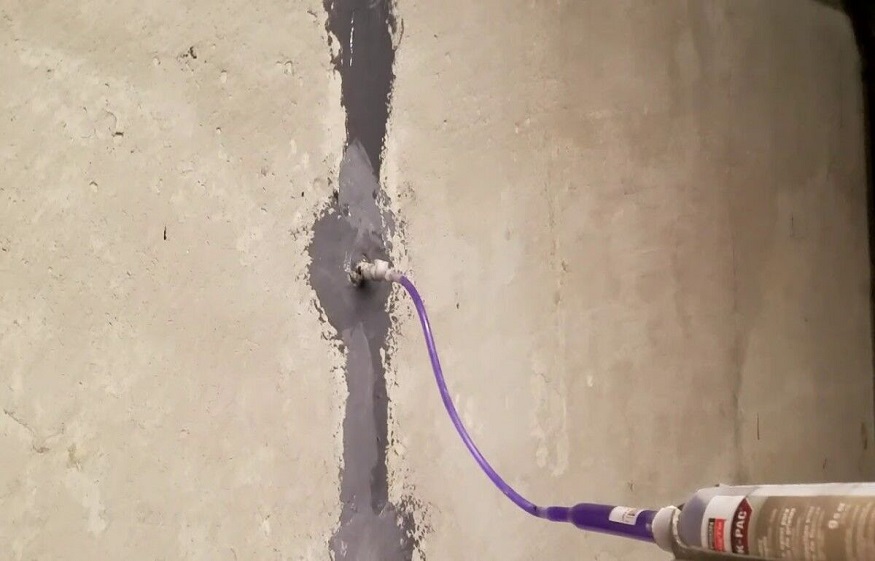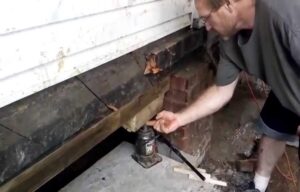For both new and older homes, foundation cracks are completely normal . It is therefore not a sign that the foundations of your home are damaged. On the other hand, an active crack could quickly worsen , which is why it is essential to know the different varieties of crack as well as the possible solutions to solve this problem.
What is a foundation crack?
Before knowing how to repair any problem associated with a crack, it is essential to know what exactly a foundation crack is. The word “crack” represents an unwanted crack in the walls of a surface . Cracks can be of different widths and lengths. Obviously, the size of the crack will automatically be proportional to the concerns associated with this famous problem.
Mainly in Quebec, the soils are composed of clay and this substance reacts in the same way as a sponge, so to speak. In times of drought, it flattens and when it is waterlogged, the clay swells. As a result, a void forms between the ground and the foundation of a dwelling. Then, the building will tend to sag to fill this empty space.
What are the causes and consequences of cracks?
The main causes of crack
A question that often comes up is: what are the causes of cracks? In fact to better understand the causes, there are two varieties of foundation cracks.
The passive crack
A passive crack means that it has changed little or not at all over time. Passive cracks are usually caused when the concrete dries , which is why all foundations have one or more shrinkage cracks. But why does concrete cause cracks? Quite simply, because once the water has evaporated from the concrete, it loses its elasticity and this causes the creation of small cracks. These shrinkage cracks are usually located near windows in a dwelling. Moreover, in the majority of cases they do not require repair .
The active crack
Unlike the passive crack, this one is likely to get worse over time . It is this variety of cracks to be wary of, as it affects the strength of the concrete wall in the medium term.
It is mainly caused by ground movement due to excess or lack of water as well as thawing and freezing . Depending on the nature of the soil on which your home is located as well as the variation of the climate, the soil compresses unevenly. Due to this, over time, the walls and the base of the foundation will automatically crack.
Other causes for an active crack include pyrite-contaminated or defective concrete, insufficient heating, water erosion, or simply human activity.
What are the consequences of cracks?
Be aware that cracks do not impact the strength of the structure immediately. On the other hand, in the medium term, they cause the appearance of mould, odor and humidity . If these are not treated, over the years the cracks will result in water infiltration which will make the concrete structure porous and will impact the solidity of the building.
How to repair foundation cracks quickly and effectively?
Any active cracks are proof that there is a major problem with your foundation. Therefore, the following work must be carried out:
Installation of industrial supports to support the building;
Excavation and demolition of the existing foundation;
Sometimes not all of these tasks are required, but active concrete crack repair work should not be taken lightly. It is therefore essential to call on a qualified expert in this field .
The materials used
To make your foundation watertight again, choosing the right injection materials is essential. The two most common materials used for crack repair are polyurethane and flexible epoxy . Be aware that reinforcing your building’s foundation is just as important as grouting, especially when it comes to active cracks.
Polyurethane: this material of choice for the majority of cracks is in fact a hydrophilic injection resin. So it reacts with water to form a flexible and stretchy foam. It is possible to carry out the injection using a hydraulic pump which, in fact, will give the necessary pressure in order to ensure that the product penetrates completely into the crack.
Flexible epoxy resin: this is often used for repair work of large dimensions. In fact, the resin is the result of two products that need to be mixed before injection. It is also used to firmly anchor bolts, to bind concrete parts and to repair a damaged concrete surface.
Steel anchors: these are very important to prevent the reopening of a crack and solidify the concrete. The different models of steel anchors must be selected according to the type of crack you are facing. A passive crack does not require steel reinforcement, but an active crack does. These renovations must be carried out by a specialized contractor .
Preventing cracks is possible
In Quebec, climatic conditions are very variable. This is why anticipating is the best solution to prevent cracks. Have the quality of your walls and the structure of your home inspected once a year by a professional. Are you looking for a specialist in the Montreal area? Visit anugo.ca to find all the qualified professionals for the inspection of your building. Ideally, you should have your home inspected in the fall or spring.
Another solution to prevent cracks is to install a French drain around your home. This will actually drain the excess water that is responsible for infiltration.



